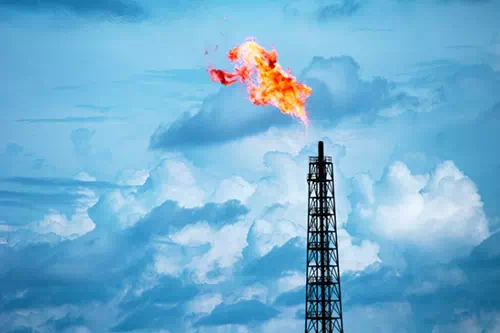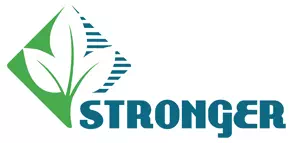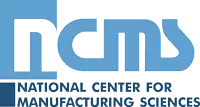

|
Resource Conservation and Recovery Act Overview Congress passed the Resource Conservation and Recovery Act (RCRA) in 1976 in order to manage the growing amount of municipal and industrial waste in the United States. This law has been amended several times since then, notably in 1980 (including important provisions related to the status of energy extraction wastes) and again in 1984 (HSWA, or Hazardous and Solid Waste Amendments) including new authorities to prevent and address contamination from underground tanks storing petroleum products and hazardous substances. The following provisions most directly address exploration, production and processing of oil and natural gas:
RCRA Subtitles C and D - Introduction Subtitles C and D are the primary federal laws regulating solid and hazardous wastes. An amendment was added to RCRA in 1980 directing EPA to study wastes associated with the exploration, development, or production of crude oil or natural gas or geothermal energy (E&P wastes) and to submit a report to Congress and make a regulatory determination regarding these wastes. In 1988, EPA issued a regulatory determination stating that regulation under RCRA Subtitle C (i.e., hazardous waste regulations) of oil and natural gas exploration and production wastes is not warranted. As a result, a large amount of exploration and production waste generated is governed by Subtitle D regulations. In 1993, EPA issued a regulatory clarification to its 1988 regulatory determination which clarifies the regulatory status of wastes generated by the crude oil reclamation industry, service companies, gas plants and feeder pipelines, and crude oil pipelines. The 1993 notice provides further clarification on the status of these wastes under the exemption and does not alter the scope of the original exemption in any way. As a result, a large amount of exploration and production waste generated is governed by Subtitle D regulations. However, as discussed below, not all wastes generated at exploration and production sites are necessarily exempt from Subtitle C regulations, and the exemption does not apply to wastes generated from certain non-exploration and production activities (e.g., transportation operations, compression stations, manufacturing operations). RCRA Subtitle C - Hazardous Waste Determination RCRA Subtitle C requirements flow from whether or not you have a hazardous waste. Therefore, the first step in determining if RCRA Subtitle C applies is to do a waste determination at the point of generation. It is important that you assess all of your wastes because, as explained later, different sets of rules will apply depending on the types and total amounts of hazardous waste generated. It is recommended that you follow the following steps to determine whether a waste is a RCRA hazardous waste. The steps are listed below, expressed as a series of simple questions. The FedCenter Flowchart is a useful tool to use in making a hazardous waste determination.
RCRA Subtitle C: Oil and Gas Exploration and Production Hazardous Waste Exemption In December 1978, EPA proposed hazardous waste management standards that included reduced requirements for several types of large volume wastes, including certain exploration and production wastes. Generally, EPA believed these large volume "special wastes" were lower in toxicity than other wastes being regulated as hazardous waste under RCRA. Subsequently, Congress exempted these wastes from the RCRA Subtitle C hazardous waste regulations pending the aforementioned study and regulatory determination by EPA. In 1988, EPA issued a regulatory determination stating that regulation under RCRA Subtitle C of exploration and production wastes is not warranted. Hence, exploration and production wastes have remained exempt from Subtitle C regulations. The exemption for oil and gas exploration and production wastes is codified at 40 CFR 261.4 (b)(5). The RCRA Subtitle C regulatory exemption, however, does not preclude these wastes from control under state regulations, under the RCRA Subtitle D solid waste regulations, or under other federal regulations. In addition, although they are relieved from regulation as hazardous wastes, these wastes can still present a hazard to human health and the environment if improperly managed. Best management practices should be considered for those cases where a regulatory definition of hazardous waste does not apply, as appropriate, where wastes present a risk to human health and the environment.
Applying the Hazardous Waste Exemption to Specific Exploration and Production Waste Types (also see EPA guidance titled Exemption of Oil and Gas Exploration and Production Wastes from Federal Hazardous Waste Regulations) The following is a list of wastes that are considered exempt from hazardous waste regulation under the exploration and production exemption:
A practical example of application of the exploration and production hazardous waste regulatory exemption is that a liquid exploration and production waste which is exempted can be disposed of in a Class II UIC well. However, a liquid hazardous waste (i.e., a waste that does not meet the regulatory exemption) must be disposed of in a Class I UIC well, a much more costly disposal method. U.S. EPA also provided a list of oil and gas wastes that it considers non-exempt. That list includes the following:
These lists are not all inclusive. There is a simple rule of thumb for determining if an exploration and production waste is likely to be considered exempt or non-exempt from RCRA regulations. The waste is most likely to be considered exempt by U.S. EPA if:
Below are just a few oil and gas sector-RCRA Subtitle C interpretations/guidance offered by EPA in the past. This guidance and other outreach material can be found at RCRA Online.
A few notes to keep in mind about the RCRA Subtitle C regulatory exemption for drilling fluids, produced waters, and other wastes associated with the exploration, development, or production of crude oil or natural gas or geothermal energy:
RCRA Subtitle C: Owner/Operator Requirements if a Hazardous Waste Exists There are three categories a company can fall into if they manage hazardous waste:
An oil or natural gas exploration, production and processing operation must identify its generator category. There are three classes of generators:
EPA published a hazardous waste summary table for generators that clearly shows the requirements for each class of hazardous waste generator. RCRA Subtitle C - Requirements for Transporters of Hazardous Waste A hazardous waste transporter under Subtitle C of RCRA is any person engaged in the off-site transportation of hazardous waste within the United States, if such transportation requires a hazardous waste manifest. RCRA Subtitle C - Requirements for Treatment, Storage or Disposal of Hazardous Waste There are strict regulations for the treatment, storage, and disposal (TSD) of hazardous waste. For more information on TSDs, please visit the following link. RCRA Subtitle C - Universal Waste Requirements (40 CFR Part 273) The RCRA universal waste regulations govern the collection and management of certain widely generated wastes. The objective of the universal waste regulations is to streamline hazardous waste management standards to facilitate environmentally sound collection and proper recycling or treatment of certain "universal wastes," which include the following: Under the RCRA universal waste regulations there are three categories of entities that deal with universal wastes:
RCRA Subtitle C - State Authorization EPA can delegate the RCRA Subtitle C program to States. With State Authorization, which is technically a rulemaking process, EPA delegates the primary responsibility of implementing the RCRA programs to individual states in lieu of EPA. This process ensures national consistency and minimum standards while providing flexibility to states in implementing rules. Currently, 50 states and territories have been granted authority to implement the base, or initial, program. Many are also authorized to implement additional parts of the RCRA program that EPA has since promulgated, such as Corrective Action and the Land Disposal Restrictions. State RCRA programs must be at least as stringent as the federal requirements, but states can adopt more stringent requirements as well. Since the regulations in your State may be different in some respects from the federal regulations, please visit your State's laws and regulations to determine what hazardous waste requirements apply. RCRA Subtitle D - Introduction RCRA Subtitle D addresses non-hazardous solid wastes, including certain hazardous wastes which are exempted from the Subtitle C regulations such as: hazardous wastes from households and from conditionally exempt small quantity generators. Subtitle D also includes garbage (milk containers, coffee grounds), non-recycled household appliances, the residue from incinerated automobile tires, refuse such as metal scrap, wall board and empty containers, and sludge from industrial and municipal waste water and water treatment plants and from pollution control facilities. RCRA Subtitle D - State Authorization Congress intended via RCRA Subtitle D that permitting and monitoring of municipal and non-hazardous waste landfills shall be a State responsibility. RCRA does not authorize EPA to issue Federal permits for disposal of Subtitle D wastes. Therefore, you will have to visit your State's laws and regulations to determine what solid waste requirements apply. RCRA Subtitle I - Introduction Underground Storage Tanks (USTs) and UST systems that contain hazardous substances and/or petroleum are regulated under RCRA Subtitle I. It is unlikely that oil or natural gas exploration or production operations would have regulated USTs or UST systems. For example, there are several exclusions to USTs and UST systems regulated at the federal level. With regard to the natural gas sector, the federal UST program excludes the following USTs and UST systems from regulation:
In contrast to the lack of need for USTs or UST systems or applied exclusions by oil or natural gas exploration or production operations, gas plants (being an industrial process) may have USTs or UST systems subject to regulation. For a summary of the federally enforceable requirements for underground storage tanks, see Learn About Underground Storage Tanks. RCRA Subtitle I - State Authorization State Program Approval allows states to implement a state UST program in lieu of the federal UST program. The UST program is largely administered by the states, and states conduct the bulk of UST inspections. Therefore, please visit your State's laws and regulations to determine what requirements to USTs and UST systems apply. Management of Oil and Gas Exploration and Production Waste. Based on the information gathered for this review, EPA concludes that revisions to the federal regulations for the management of exploration, development and production wastes of crude oil, natural gas and geothermal energy under Subtitle D of RCRA (title 40 of the Code of Federal Regulations in Part 257) are not necessary at this time. Managing Your Hazardous Waste: A Guide for Small Businesses. This handbook provides an overview of the federal hazardous waste regulations and helps small-business owners and operators understand how best to comply with federal hazardous waste management regulations. Exemption of Oil and Gas Exploration and Production Wastes from Federal Hazardous Waste Regulations (Oct., 2002). This EPA publication provides an understanding of the exemption of certain oil and gas exploration and production wastes from regulation as hazardous wastes under Subtitle C of the Resource Conservation and Recovery Act (RCRA). Introduction to Universal Waste (EPA). This module describes the universal waste program, found in 40 CFR Part 273, and defines which hazardous wastes may be handled under these streamlined regulations. RCRA On-line. The RCRA Online database is designed to enable users to locate documents, including publications and other outreach materials, that cover a wide range of RCRA issues and topics. RCRA Orientation Manual 2014 . This updated EPA manual provides introductory information on the solid and hazardous waste management programs under the Resource Conservation and Recovery Act (RCRA). Designed for EPA and state staff, members of the regulated community, and the general public who wish to better understand RCRA, this document constitutes a review of the RCRA program. RCRA State Authorization. State authorization is a rulemaking process through which EPA delegates the primary responsibility of implementing the RCRA hazardous waste program to individual states in lieu of EPA. RCRA Underground Storage Tank (UST) Enforcement. Underground Storage Tanks (USTs) that contain hazardous substances and/or petroleum are regulated under Subtitle I of the Resource Conservation and Recovery Act of 1976 (RCRA). On the other hand, USTs containing hazardous wastes are regulated under Subtitle C of RCRA. Universal Wastes (EPA). Overview of regulations that govern the collection and management of these widely generated wastes. Waste, Chemical and Cleanup Enforcement Policy, Guidance and Publications. EPA develops and issues guidance documents to provide instructions for implementing and complying with regulations. Guidance documents also elaborate on the Agency's interpretation of the requirements of the Act. Policy statements outline a position on a topic or specify procedures that should generally be followed. In many cases, policy statements are addressed to EPA staff, but some are addressed to the regulated community. Agency’s Unconventional Oil and Gas (UOG) website. Proper management of O&G E&P waste website. Exemption of O&G E&P Wastes from Federal Hazardous Waste Regulations (2002). Voluntary management practices for O&G E&P as they address pits, tanks, and land application (2014). Legislative and regulatory timeline for crude oil and natural gas waste. Intermountain Oil and Gas Project: Solid Waste Management. Links to useful resources. Managing Industrial Solid Wastes From Manufacturing, Mining, Oil and Gas Production, and Utility Coal Combustion (March 1992). This booklet published by the U.S. Congress, Office of Technology Assessment, provides an overview of RCRA hazardous and non-hazardous waste issues. Reasonable and Prudent Practices for Stabilization (RAPPS) of Oil and Gas Construction Sites. Links to useful resources.
|
Funded by EPA through a Cooperative Agreement
|
 |
||
About | Technical Topics | Federal Statutes & Regulations - US EPA | Federal Statutes & Regulations - Non-EPA | Emergency Response |
|
EPA Resources | State/Local Resources | Other Resources | Acronyms | Search | Disclaimer | Home



